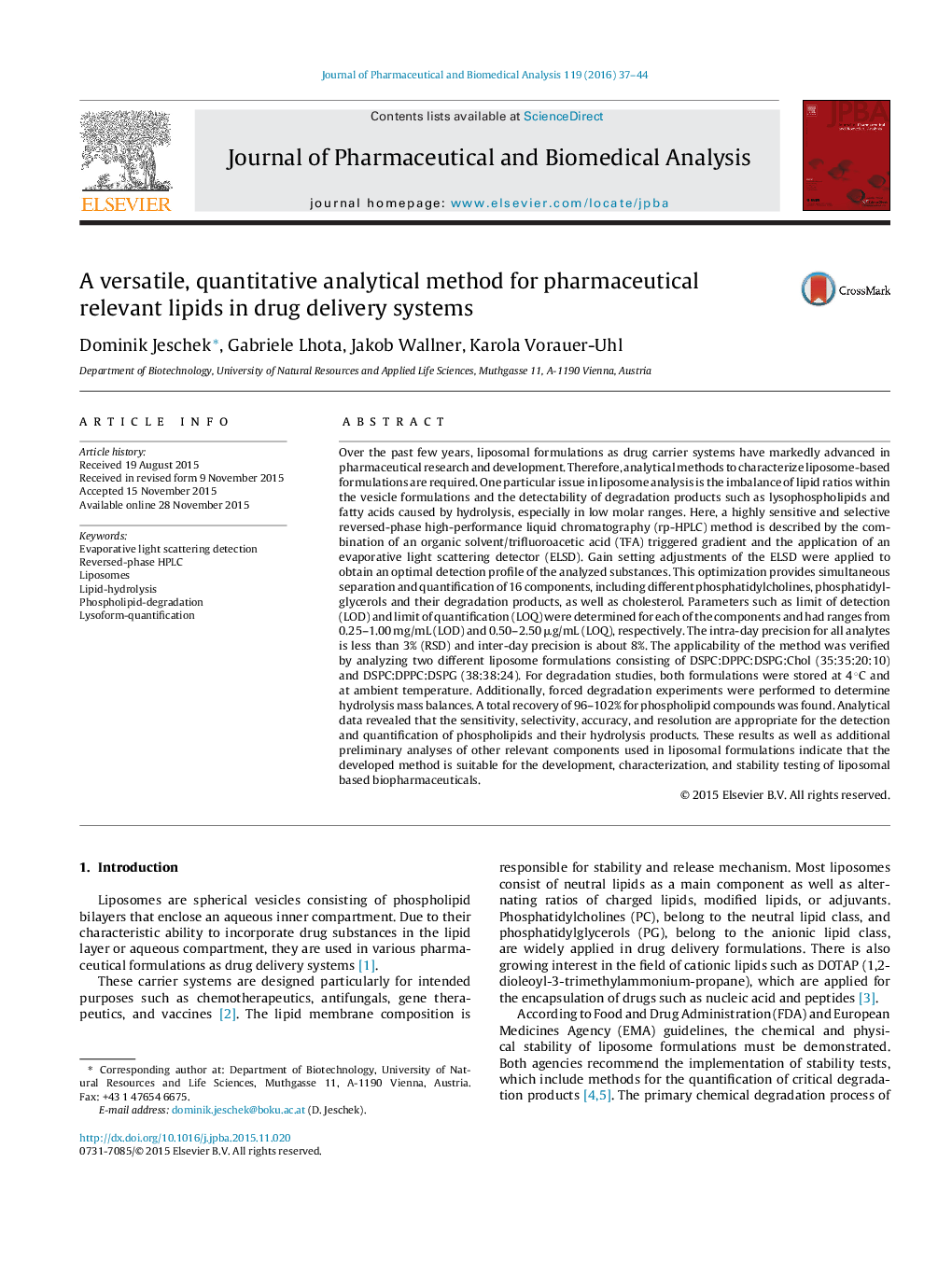| کد مقاله | کد نشریه | سال انتشار | مقاله انگلیسی | نسخه تمام متن |
|---|---|---|---|---|
| 1221057 | 1494616 | 2016 | 8 صفحه PDF | دانلود رایگان |
• A versatile, applicable rp-HPLC method using ELSD is demonstrated.
• An rp-HPLC method for the separation of most liposome forming components is proposed.
• Quantification of C14–18 lipids, cholesterol and degradation products is shown.
• The method provides low limits of detection and excellent precision.
• The feasibility of the method for liposome analysis is demonstrated.
Over the past few years, liposomal formulations as drug carrier systems have markedly advanced in pharmaceutical research and development. Therefore, analytical methods to characterize liposome-based formulations are required. One particular issue in liposome analysis is the imbalance of lipid ratios within the vesicle formulations and the detectability of degradation products such as lysophospholipids and fatty acids caused by hydrolysis, especially in low molar ranges. Here, a highly sensitive and selective reversed-phase high-performance liquid chromatography (rp-HPLC) method is described by the combination of an organic solvent/trifluoroacetic acid (TFA) triggered gradient and the application of an evaporative light scattering detector (ELSD). Gain setting adjustments of the ELSD were applied to obtain an optimal detection profile of the analyzed substances. This optimization provides simultaneous separation and quantification of 16 components, including different phosphatidylcholines, phosphatidylglycerols and their degradation products, as well as cholesterol. Parameters such as limit of detection (LOD) and limit of quantification (LOQ) were determined for each of the components and had ranges from 0.25–1.00 mg/mL (LOD) and 0.50–2.50 μg/mL (LOQ), respectively. The intra-day precision for all analytes is less than 3% (RSD) and inter-day precision is about 8%. The applicability of the method was verified by analyzing two different liposome formulations consisting of DSPC:DPPC:DSPG:Chol (35:35:20:10) and DSPC:DPPC:DSPG (38:38:24). For degradation studies, both formulations were stored at 4 °C and at ambient temperature. Additionally, forced degradation experiments were performed to determine hydrolysis mass balances. A total recovery of 96–102% for phospholipid compounds was found. Analytical data revealed that the sensitivity, selectivity, accuracy, and resolution are appropriate for the detection and quantification of phospholipids and their hydrolysis products. These results as well as additional preliminary analyses of other relevant components used in liposomal formulations indicate that the developed method is suitable for the development, characterization, and stability testing of liposomal based biopharmaceuticals.
Figure optionsDownload as PowerPoint slide
Journal: Journal of Pharmaceutical and Biomedical Analysis - Volume 119, 5 February 2016, Pages 37–44
